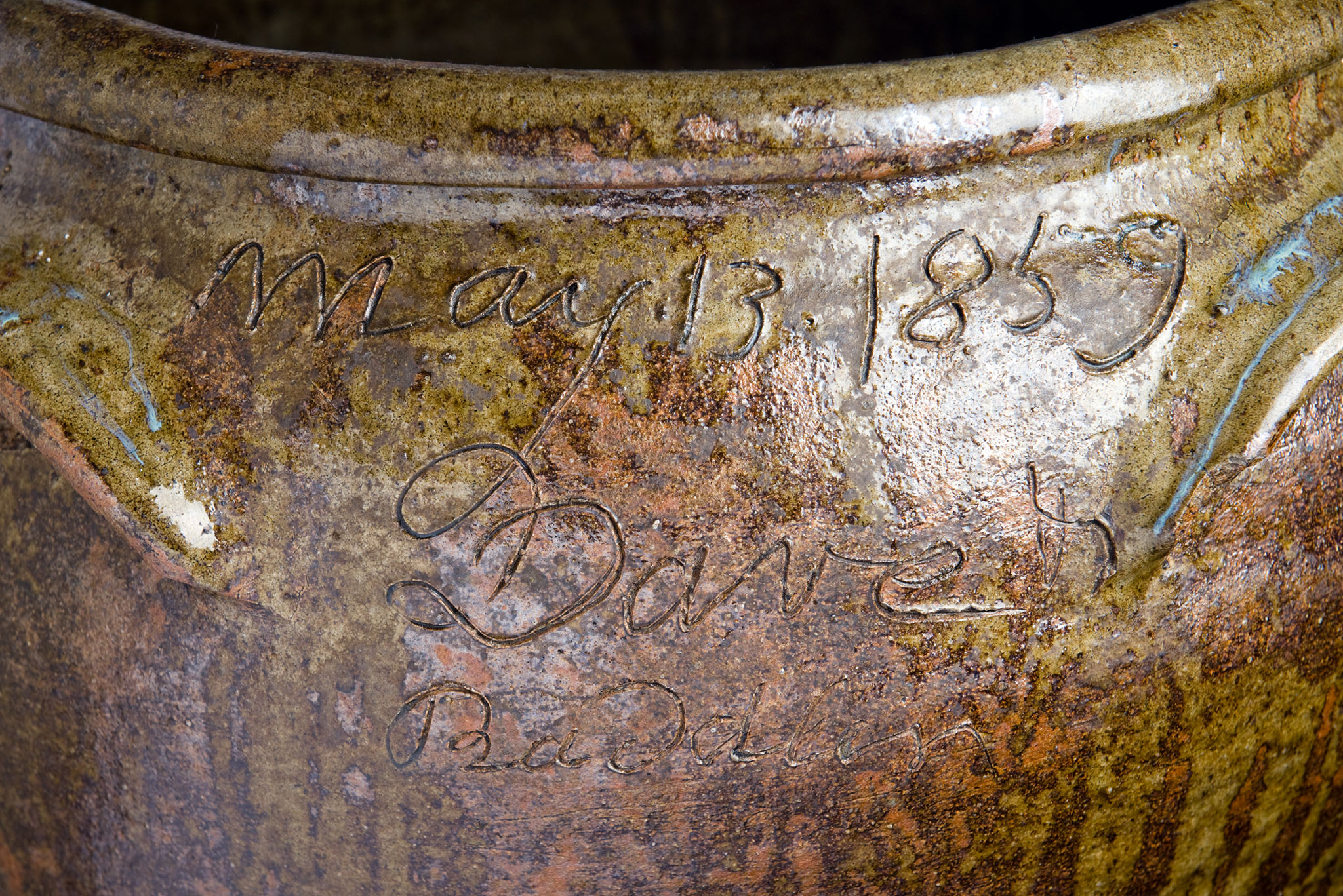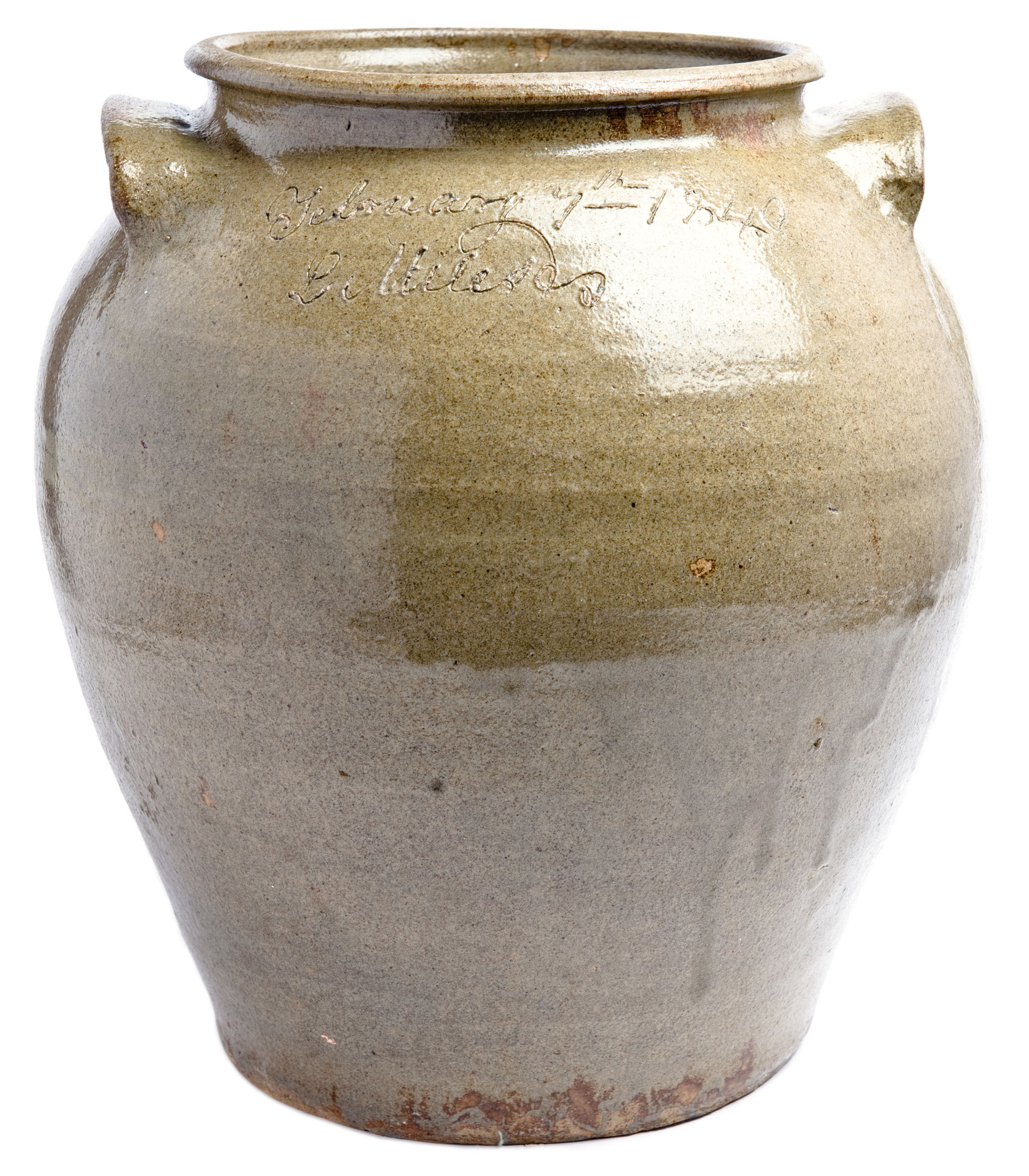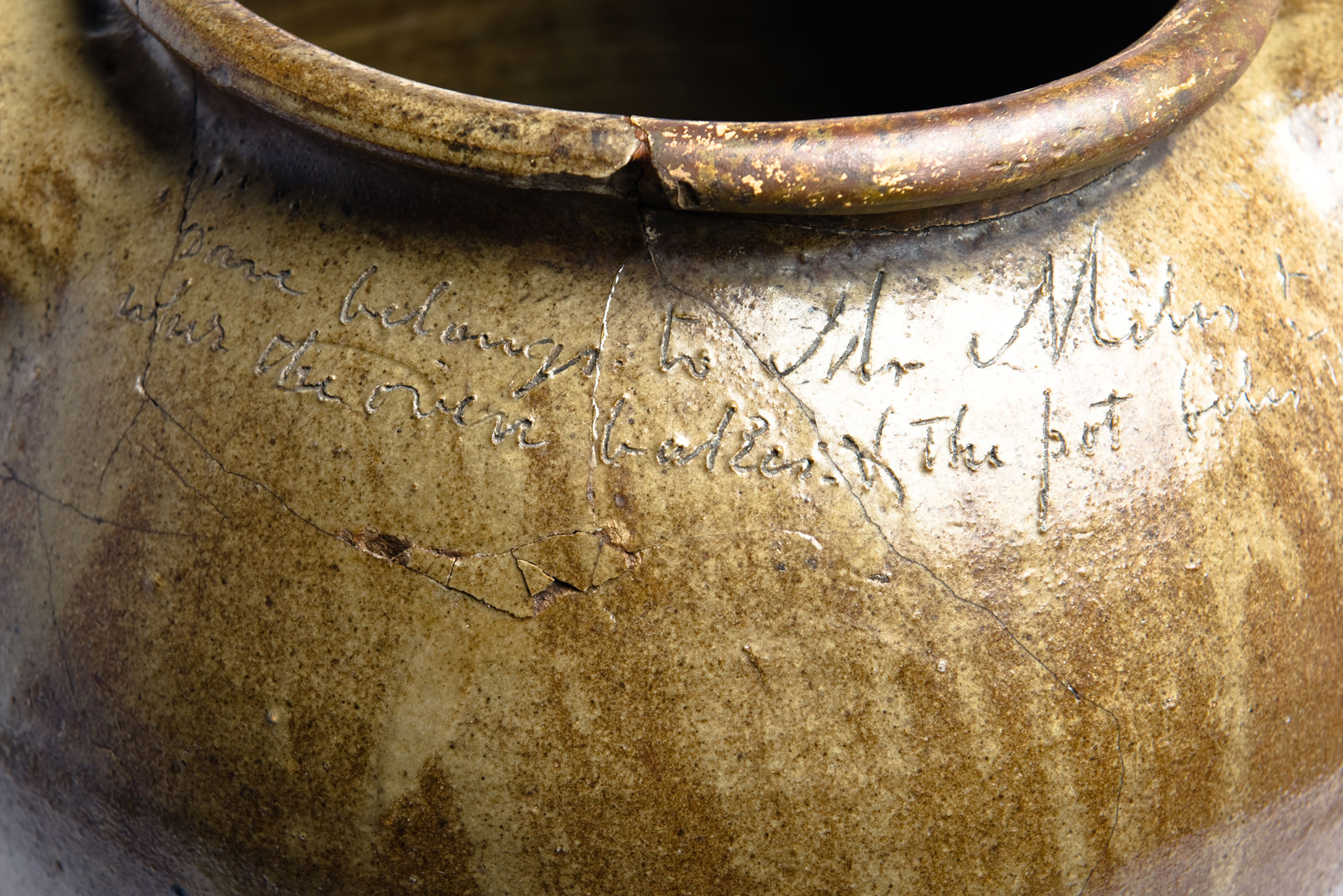The Remarkable Edgefield Pottery of David Drake
Stoneware storage jar inscribed: “Dave belongs to Mr. Miles, wher the oven bakes and the pot biles” and dated July 31, 1840.
The Charleston Museum is honored to own an important collection of pottery created by famed Edgefield potter “Dave” or David Drake. Born into slavery around 1801 in the Edgefield district of South Carolina and held in bondage by at least four men over his lifetime, Dave was a skilled potter capable of throwing large, well-formed vessels which were functional in the 19th century, but are now prized as priceless cultural artifacts.
Dave’s first enslaver was Harvey Drake who operated a pottery with Abner Landrum near Edgefield. He was later transferred or sold within the Landrum family and was enslaved by Rev. John Landrum, and Franklin Landrum, before finally ending up with Lewis Miles who owned the “Stony Bluff” factory where Dave would go on to produce some of his most famous work in alkaline glazed stoneware pottery.
Stoneware storage jar dated May 13, 1859, signed “Dave + Baddler” and “LM” for Lewis Miles, their enslaver.
Dave’s pottery is remarkable not only for its quality but also because of the fact that many of his pieces are signed and inscribed with original poetry. On one storage jar in the Museum’s collection, he even references his own enslavement, saying: “Dave belongs to Mr. Miles, wher the oven bakes and the pot biles.” Working in the decades preceding the Civil War, he was subject to some of South Carolina’s most oppressive laws that severely restricted most forms of personal agency and strictly forbade African Americans from learning to read and write, the fear being that literacy would enable the enslaved community to communicate more effectively and potentially organize to undermine white power structures.
Having been cultivated within this cultural context makes David Drake’s work all the more remarkable. Not only was he a skilled craftsman, able to throw and shape functional pottery on a large scale, but he also exhibited the skill and agency necessary to not only sign much of his work, but also to compose and inscribe it with his own original poetry.
How was Drake able to get away with this remarkable expression of his own agency? The truth is we don’t really know. One theory says that Drake was taught to read and write while working in the newspaper shop owned by one of his early enslavers, Abner Landrum, who operated the Edgefield Hive. Even if his literacy can be explained this way, its acceptance by a larger openly hostile society remains a mystery. With the products of his work being shipped all across the region, one must wonder how it was received—or if it warranted contemporary notice—by the wider society? It is possible that many contemporary consumers did not realize that the artist behind the “Dave” signature was African American.
Stoneware Storage jar dated February 7, 1840.
With emancipation following the Civil War, Dave adopted the surname of the family he had been enslaved under at birth, calling himself David Drake. Although the exact date of his passing is unknown, it is believed David Drake died sometime in the 1870s.
The Museum’s collection of David Drake’s work is one of the most important held in a public collection. It includes two of the largest vessels known by his hand, storage jars with a capacity in excess of forty gallons each. The collection remains on permanent exhibition in the Lowcountry History Hall.
Chad Stewart
Curator of History




